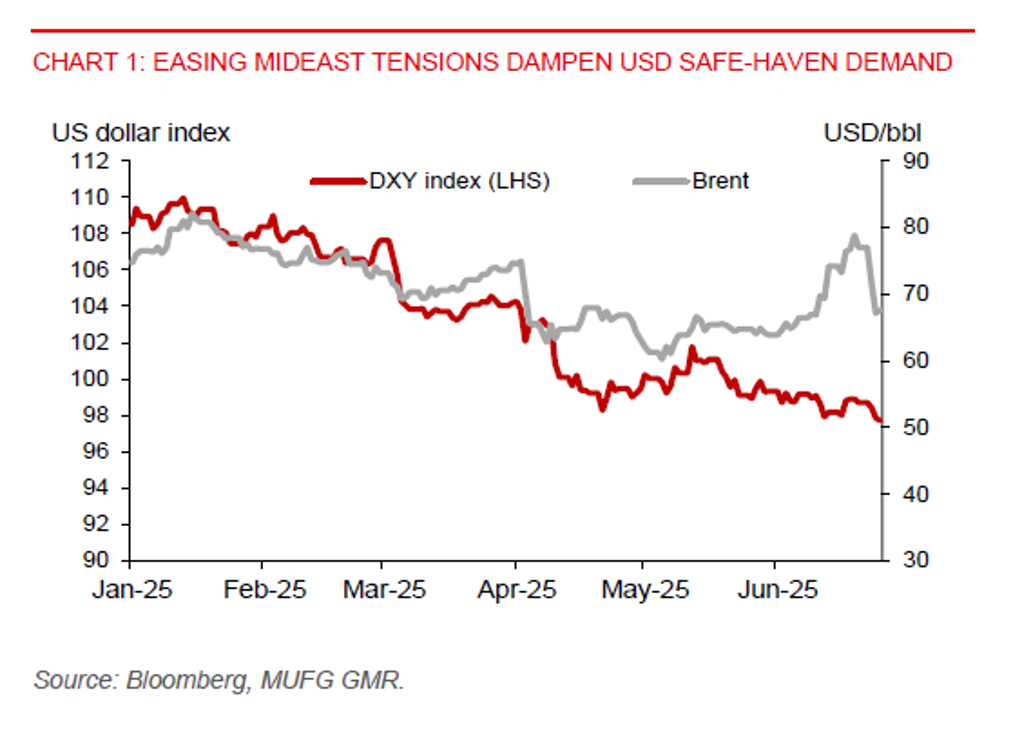Ahead Today
G3: US Q1 GDP third estimates, durable goods orders, initial jobless claims, wholesale inventories
Asia: Singapore industrial production, HK exports
Market Highlights
Safe-haven demand for the US dollar has eased following the ceasefire between Israel and Iran, with the broad US dollar index (DXY) retreating to recent lows. While a pentagon report indicated limited impact from recent US strikes on Iranian nuclear facilities, President Trump has disputed the findings and said at the NATO summit that the Israel-Iran war has ended. Oil prices have also retraced their gains made since the escalation of Israel-Iran conflict on 13 June. This alleviates concerns of an oil price shock.
Meanwhile, market expectations for 2 Fed rate cuts in H2 remain intact, despite Chair Powell reaffirming the Fed’s wait-and-see approach to monetary policy. Powell noted the difficulty in assessing the impact of tariffs. The latest macro disappointment has come from new homes sales, which cooled to 623k in May, from 722k in April. This marks a 13.7% decline and misses Bloomberg consensus of a 693k increase.
In regulatory developments, the Fed has proposed to ease banks’ capital requirement rule via rolling back the enhanced supplementary leverage ratio. This would allow banks to hold more Treasuries.

Regional FX
Asian currencies have broadly extended their gains against the US dollar, on the back of improved global risk sentiment and falling oil prices. Notably, PHP led gains in the Asia region, rising by 0.8% for the second straight day.
The Bank of Thailand left its benchmark policy rate unchanged at 1.75%, in line with our expectations as the central bank seeks to preserve policy space following rate cuts in the past 2 meetings. Despite the rate pause, a dovish tone was maintained, with the MPC noting that monetary policy should stay accommodative to support growth in H2.
The Thai baht showed limited reaction to the policy rate decision, given markets have largely priced that in. Looking ahead, we maintain our outlook for the Thai baht to weaken modestly against the US dollar. This will mainly be driven by a slowdown in Thailand’ GDP growth in H2 and weaker tourism receipts. We are also of the view that market sentiment on USDTHB has been notably weak, suggesting scope for a potential reversal.
Given the backdrop of slowing domestic growth and negative inflation, we maintain our outlook for the BoT to cut rates by another 25bps to 1.50% in the August meeting. Notably, headline inflation turned negative in April and May.
The risk of a much sharper THB depreciation and more BoT rate cuts than we currently expect could stem from several factors. These factors include the potential implementation of the full 36% US reciprocal tariffs, a renewed escalation of Israel-Iran conflict that could raise oil prices sharply, or a collapse in the Pheu Thai-led coalition government. For now, we assume these risks are contained.
